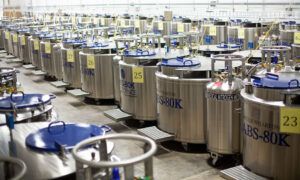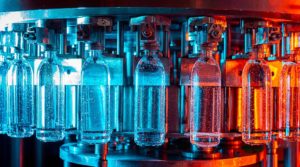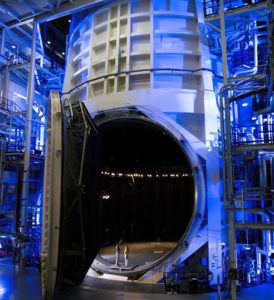What is a Biorepository? A biorepository, or “biobank”, is a specialized facility designed to store, archive, and distribute biological samples for research or clinical purposes. Biorepositories house biological samples, such as blood, plasma, urine, saliva, tissues, DNA, and organs, among other specimen types, collected from consenting individuals. Critical associated information, including relevant health information about […]
READ MORE
To create that perfect glass of wine, refreshing sip of water, or other non-carbonated drinks of choice, beverage producers often turn to liquid nitrogen (LN2). Liquid nitrogen fills an important role in the bottling and canning of non-carbonated beverages. What is Liquid Nitrogen? Liquid nitrogen is a cryogenic, liquefied form of nitrogen (N). Nitrogen is […]
READ MORE
On October 4, 1957, the Soviet Union launched the first artificial satellite into space, thus ushering in the Space Age. Since then, over 8,000 satellites have been launched from more than 50 countries. According to Jonathan McDowell, an astronomer at the Harvard-Smithsonian Center for Astrophysics, at the end of 2021 there were around 5,000 active […]
READ MORE
In December 2020, two employees working at a Vernon, California food processing plant lost consciousness and died following an apparent liquid nitrogen leak. On January 28, 2021, there were several fatalities, and many other employees became sick, after being exposed to nitrogen gas when a liquid nitrogen line ruptured at a food processing plant in […]
READ MORE
How about meat without involving animals? Move over, veggie burgers; food companies such as Beyond Meat and Impossible Foods, among others, have created plant-based meats that smell, taste, and look (imagine a thick, juicy hamburger) like the real thing. Unlike traditional veggie burgers, made from soy and bean paste, which have been marketed primarily to […]
READ MORE
Frozen foods first became commercially viable in the 1930s, thanks in large part to Clarence Birdseye. He is credited with inventing the double-belt freezer, the forerunner to modern quick-freeze technology, which includes the tunnel freezers used by most major food processors in North America. Frozen foods offer many benefits to today’s busy consumers, including convenience; […]
READ MORE
Cryotherapy Cryotherapy (also known as cold therapy) is broadly defined as the use of very cold temperatures for medical or general wellness purposes. Modern cryotherapy (which comes from the Greek kyro, meaning “cold” and therapeia, meaning “healing”) can be traced back thousands of years, and some form of it was practiced by the ancient Greeks, […]
READ MORE
Overview As dog owners, we treat our pets as we do our children, taking care that the food we give them is not only filling and nutritious but contains only high-quality ingredients sourced and processed in ways that meet our exacting standards. For many owners, far in the past are the days of grabbing any […]
READ MORE
The College of American Pathologists (“CAP”) recently imposed new requirements to address risks related to the use and storage of liquid nitrogen (“LN2”) and dry ice. Background The new requirements come after a deadly incident in 2017, when liquid nitrogen leaked at a Georgia lab that was not accredited through CAP. Emergency responders were called […]
READ MORE











